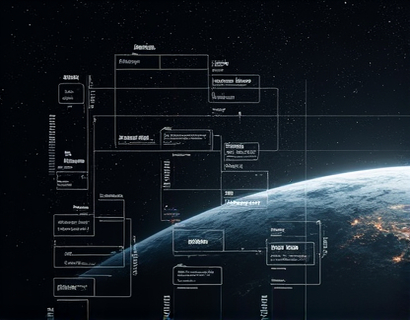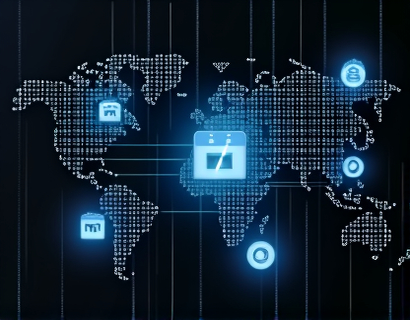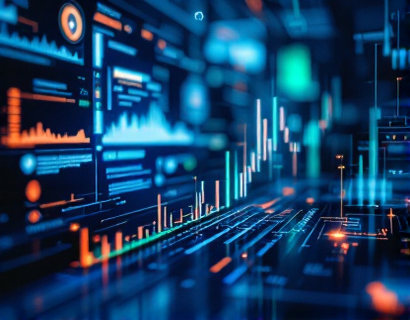Agricultural Software: Empowering Farming Efficiency with Tailored Tech Solutions
In the rapidly evolving landscape of agriculture, the integration of advanced technology has become pivotal for enhancing efficiency and productivity. Agricultural software, often referred to as AgriTech, plays a crucial role in transforming traditional farming practices into data-driven, optimized operations. This article delves into the various ways tailored tech solutions are revolutionizing the agricultural sector, focusing on how these innovations streamline operations, enhance data management, and support strategic decision-making.
Streamlining Farm Operations
The primary goal of agricultural software is to simplify and automate routine tasks, allowing farmers to focus on more critical aspects of their business. One of the most significant benefits is the automation of data collection and reporting. Manual data entry is time-consuming and prone to errors, but with software solutions, sensors and IoT devices can automatically gather data on soil moisture, weather conditions, and crop health. This real-time data is then processed and presented in an easily digestible format, enabling farmers to make informed decisions quickly.
Another area where software significantly improves efficiency is in the management of farm equipment. Precision agriculture tools allow for the optimal use of machinery by providing detailed insights into equipment performance and maintenance needs. For instance, software can track the usage and condition of tractors, plows, and harvesters, scheduling maintenance to prevent breakdowns and reduce downtime. This not only saves time but also extends the lifespan of expensive equipment.
Enhancing Data Management
Data management is a cornerstone of modern agriculture, and advanced software solutions are designed to handle vast amounts of information with ease. These platforms offer robust databases that can store and organize data from various sources, including satellite imagery, drone footage, and historical records. By centralizing data, farmers and agricultural managers can access comprehensive insights that were previously difficult to obtain.
Data visualization tools are another critical component of these software solutions. Graphs, charts, and maps provide a clear and intuitive way to understand complex data sets. For example, a farmer can view a heat map of their field showing areas with varying soil nutrient levels, allowing for targeted applications of fertilizers and pesticides. This precision reduces waste and increases crop yields, contributing to both economic and environmental sustainability.
Supporting Strategic Decision-Making
One of the most transformative aspects of agricultural software is its ability to support strategic decision-making. By analyzing historical and real-time data, farmers can predict trends, optimize resource allocation, and plan for future seasons with greater accuracy. For instance, weather forecasting integrated with farm management software can help farmers decide the best times to plant, irrigate, and harvest, minimizing the risks associated with unpredictable weather patterns.
Market analysis tools within these platforms provide insights into market prices, demand forecasts, and competitor activities. This information is invaluable for making informed decisions about crop selection, pricing strategies, and sales tactics. Farmers can use this data to identify profitable opportunities and adjust their operations accordingly, ensuring they remain competitive in the market.
Improving Resource Management
Resource management is a critical aspect of sustainable farming, and agricultural software helps in optimizing the use of water, fertilizers, and pesticides. Smart irrigation systems, for example, use soil moisture sensors and weather data to determine the exact amount of water needed, reducing water waste and ensuring crops receive the right amount of hydration. This not only conserves water but also reduces energy costs associated with pumping and distributing water.
Fertilizer and pesticide management is another area where software shines. By analyzing soil tests and crop health data, these tools can recommend the optimal amounts and types of inputs required, preventing overuse and reducing environmental impact. This precision application not only saves costs but also promotes healthier ecosystems.
Enhancing Crop Monitoring and Health Management
Crop monitoring is essential for early detection of diseases, pests, and nutrient deficiencies. Advanced software solutions incorporate machine learning algorithms that can analyze images from drones or satellite sensors to identify issues before they become severe. For example, subtle changes in plant color or growth patterns can indicate the onset of a disease, allowing farmers to take prompt action and prevent widespread damage.
Integrated pest management systems use real-time data to monitor pest populations and suggest appropriate control measures. This proactive approach reduces the reliance on chemical pesticides, promoting organic farming practices and protecting beneficial insects. Additionally, these systems can track the effectiveness of different control methods, helping farmers refine their strategies over time.
Facilitating Supply Chain Management
The supply chain in agriculture is complex, involving multiple stakeholders from production to distribution. Agricultural software streamlines this process by providing end-to-end visibility and coordination. From tracking the movement of crops from the field to the market, these platforms ensure that all parties have access to accurate and up-to-date information.
Inventory management tools help farmers and distributors maintain optimal stock levels, reducing the risk of overstocking or stockouts. This efficiency not only saves costs but also ensures that products are fresh and available when needed. Additionally, blockchain integration can enhance traceability, allowing consumers to verify the origin and quality of the products they purchase.
Fostering Collaboration and Knowledge Sharing
Agricultural software platforms often include features that foster collaboration among farmers, researchers, and industry experts. Online forums, discussion boards, and collaborative projects enable the sharing of best practices, innovative solutions, and research findings. This community-driven approach accelerates the adoption of new technologies and practices, benefiting the entire agricultural sector.
Data analytics and reporting tools within these platforms provide valuable insights that can be shared with stakeholders, including investors, government agencies, and customers. Transparent and data-backed reporting builds trust and credibility, facilitating partnerships and securing funding for further innovations.
Conclusion
The integration of advanced software solutions in agriculture is not just a trend but a necessity for staying competitive in today's market. By streamlining operations, enhancing data management, and supporting strategic decision-making, these technologies empower farmers and agricultural businesses to achieve greater efficiency and productivity. As the agricultural industry continues to evolve, the role of AgriTech will only become more significant, driving innovation and sustainability in the sector.










































